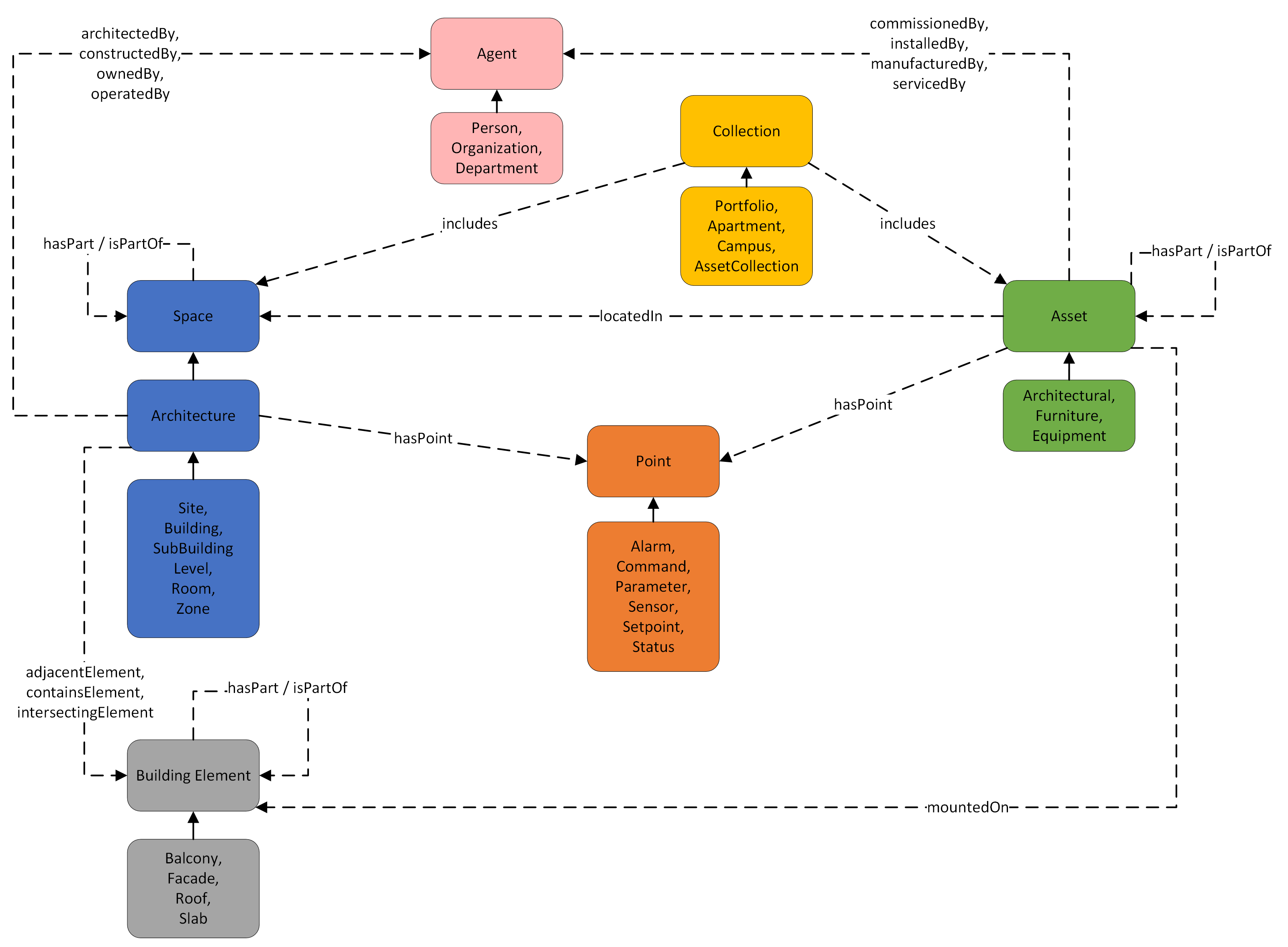RealEstateCore Structure

The figure above illustrates the overall REC structure and key design points, which are described in greater detail below. Note that this an introductory subset of the REC constructs; the browsable reference documentation contains a list of all types and all of their properties. For concrete modelling examples, see our Guides.
RealEstateCore employs a set of design principles:
- Parthood is described using the
hasPartandisPartOfrelationships. Instances of a type can only have other instances of the same type as parts; e.g., assets can only have assets as parts, spaces can only have spaces, and so forth. This provides a simple a consistent way for developers to navigate the building topology. To jump across these topologies (e.g., to indicate that an asset has a spatial location), other specific properties are used, see below. - Spatial location is described using
locatedInandisLocationOfrelationships together with someSpaceinstance. - Administrative parthood, i.e., membership in a
Collection, is described using the outgoingCollectionrelationshipincludes.
Spaces
A Space is contiguous part of the physical world that has a 3D spatial extent and that contains or can contain sub-spaces. For example a Region can contain many Sites, which in turn can contain many Buildings, which in turn can contain Levels and Rooms. This concept is comparable to a Zone in the BOT ontology. Note that we differentiate between spaces that are designed/architected (subtypes of Architecture) and spaces that are not; the former have a number of properties specific to constructed spaces.
Building elements
A BuildingElement is a part that constitutes a piece of a building's structural makeup, for example Facade, Wall, Slab, RoofInner, etc.
Assets
An Asset is an object which is placed inside of a building, but is not an integral part of that building's structure. We provide a hierarchy of assests, for example architectural, furniture, etc. Our Equipment asset hierarchy is sourced from our collaboration with Brick Schema.
Points, sensing and actuating
A Point indicates the capacity of an entity, be it an Architecture, an Asset, to produce or ingest data. The Point hierarchy is sourced from our collaboration with Brick Schema. Specific subclasses specialize this behavior: Sensor entities harvest data from the real world, Command entities accept commands from a digital twin platform, and Setpoint entities configure some capability or system, etc. Points are connected to spaces or assets using the hasPoint and isPointOf relations.
The Event class includes subclasses that can be utilized to represent individual observations or command actuations in a REC-based system, e.g., ObservationEvent or ActuationEvent.
Collections
Collection covers administrative groupings of entities that are adressed and treated as a unit for some purpose. These entities may have some spatial arrangement (e.g., an apartment is typically contiguous) but that is not a requirement (see, e.g., a distributed campus consisting of spatially disjoint plots or buildings).
Agents, persons, and organizations
Agent describes any basic types of stakeholder that can have roles or perform activities, and is subclassed into, e.g., people, companies, departments. This bears some resemblance to FOAF, which it was originally inspired by, but has since diverged due to requirements shift.